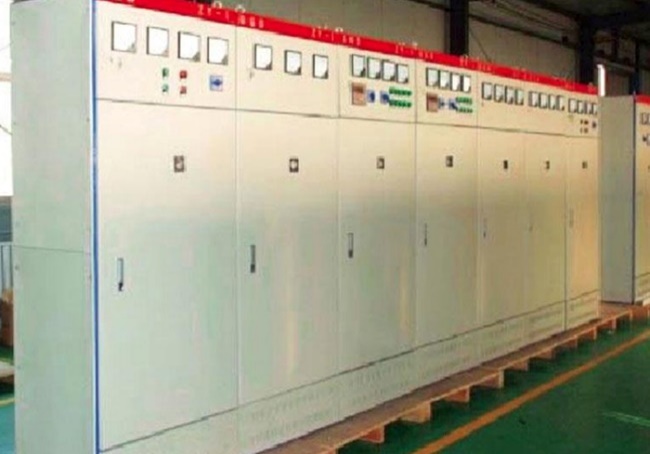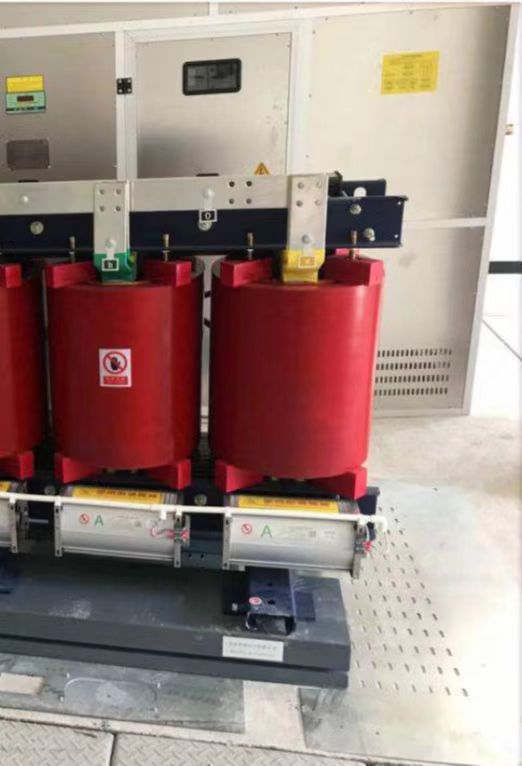Table of Contents
Comparing Dry Type and Liquid Filled Transformers
Transformers are essential components in electrical systems, used to step up or step Down voltage Levels for efficient power distribution. When it comes to transformers, there are two main types: dry type and liquid filled transformers. Each type has its own set of advantages and disadvantages, making it important to understand the differences between them before making a decision on which type to use.

Dry type transformers, as the name suggests, do not use any liquid for cooling. Instead, they rely on air for heat dissipation. This makes them ideal for indoor applications where the use of oil-filled transformers may pose a risk of fire or environmental contamination. Dry type transformers are also more environmentally friendly, as they do not contain any hazardous liquids that could potentially leak and cause harm to the Environment.
On the other hand, liquid filled transformers use oil or other insulating liquids for cooling. These transformers are typically used in outdoor applications where the risk of fire is lower, and where the transformer needs to be more compact in size. Liquid filled transformers are also more efficient at dissipating heat, making them suitable for high-power applications where heat generation is a concern.
| model | Rating capacity (KVA) | Voltage combination(KV) | Off-load losses(W) | Load losses(W) | Off-load current (%) | Short-circuit impedance (%) |
| S11-630 | 630 | 33,35/6.3,6.6,10.5,11 | 830 | 7870 | 1.10 | 6.5 |
| S11-800 | 800 | 33,35/6.3,6.6,10.5,11 | 980 | 9410 | 1.00 | 6.5 |
| S11-1000 | 1000 | 33,35/6.3,6.6,10.5,11 | 1150 | 11540 | 1.00 | 6.5 |
| S11-1250 | 1250 | 33,35/6.3,6.6,10.5,11 | 1410 | 13940 | 0.90 | 6.5 |
| S11-1600 | 1600 | 33,35/6.3,6.6,10.5,11 | 1700 | 16670 | 0.80 | 6.5 |
| S11-2000 | 2000 | 33,35/6.3,6.6,10.5,11 | 2180 | 18380 | 0.70 | 6.5 |
| S11-2500 | 2500 | 33,35/6.3,6.6,10.5,11 | 2560 | 19670 | 0.60 | 6.5 |
| S11-3150 | 3150 | 33,35/6.3,6.6,10.5,11 | 3040 | 23090 | 0.56 | 7.0 |
| S11-4000 | 4000 | 33,35/6.3,6.6,10.5,11 | 3620 | 27360 | 0.56 | 7.0 |
| S11-5000 | 5000 | 33,35/6.3,6.6,10.5,11 | 4320 | 31380 | 0.48 | 7.0 |
| S11-6300 | 6300 | 33,35/6.3,6.6,10.5,11 | 5250 | 35060 | 0.48 | 7.5 |
| S11-8000 | 8000 | 33,35/6.3,6.6,10.5,11 | 7200 | 38500 | 0.42 | 7.5 |
| S11-10000 | 10000 | 33,35/6.3,6.6,10.5,11 | 8700 | 45300 | 0.42 | 7.5 |
| S11-12500 | 12500 | 33,35/6.3,6.6,10.5,11 | 10080 | 53900 | 0.40 | 8.0 |
| S11-16000 | 16000 | 33,35/6.3,6.6,10.5,11 | 12160 | 65800 | 0.40 | 8.0 |
| S11-20000 | 20000 | 33,35/6.3,6.6,10.5,11 | 14400 | 79500 | 0.40 | 8.0 |
| S11-25000 | 25000 | 33,35/6.3,6.6,10.5,11 | 17020 | 94100 | 0.32 | 8.0 |
| S11-31500 | 31500 | 33,35/6.3,6.6,10.5,11 | 20220 | 112900 | 0.32 | 8.0 |
When comparing the two types of transformers, it is important to consider factors such as cost, efficiency, maintenance requirements, and environmental impact. Dry type transformers are generally more expensive upfront, but they require less maintenance over time compared to liquid filled transformers. Liquid filled transformers, on the other hand, are more efficient at dissipating heat, which can result in lower operating costs in the long run.
In terms of environmental impact, dry type transformers are considered to be more eco-friendly due to their lack of hazardous liquids. Liquid filled transformers, on the other hand, require proper disposal of the insulating oil when the transformer reaches the end of its life cycle, which can pose a risk to the environment if not handled properly.
In China, there are many enterprises that specialize in the manufacturing of both dry type and liquid filled transformers. These companies have the expertise and technology to produce high-quality transformers that meet the specific needs of their customers. By working with a specialist transformer manufacturer in China, businesses can ensure that they are getting a reliable and efficient transformer that is tailored to their requirements.

To learn more about the differences between dry type and liquid filled transformers, many Chinese transformer manufacturers offer informative videos on their websites. These videos provide valuable insights into the design, construction, and operation of both types of transformers, helping customers make informed decisions when choosing the right transformer for their application.
| Type | Rating power (KVA) | Voltage combination(KV) | Off-load losses(W) | Load losses(W) | Off-load current (%) | Short-circuit voltage (%) |
| S11-630 | 630 | 33,35/6.3,6.6,10.5,11 | 830 | 7870 | 1.10 | 6.5 |
| S11-800 | 800 | 33,35/6.3,6.6,10.5,11 | 980 | 9410 | 1.00 | 6.5 |
| S11-1000 | 1000 | 33,35/6.3,6.6,10.5,11 | 1150 | 11540 | 1.00 | 6.5 |
| S11-1250 | 1250 | 33,35/6.3,6.6,10.5,11 | 1410 | 13940 | 0.90 | 6.5 |
| S11-1600 | 1600 | 33,35/6.3,6.6,10.5,11 | 1700 | 16670 | 0.80 | 6.5 |
| S11-2000 | 2000 | 33,35/6.3,6.6,10.5,11 | 2180 | 18380 | 0.70 | 6.5 |
| S11-2500 | 2500 | 33,35/6.3,6.6,10.5,11 | 2560 | 19670 | 0.60 | 6.5 |
| S11-3150 | 3150 | 33,35/6.3,6.6,10.5,11 | 3040 | 23090 | 0.56 | 7.0 |
| S11-4000 | 4000 | 33,35/6.3,6.6,10.5,11 | 3620 | 27360 | 0.56 | 7.0 |
| S11-5000 | 5000 | 33,35/6.3,6.6,10.5,11 | 4320 | 31380 | 0.48 | 7.0 |
| S11-6300 | 6300 | 33,35/6.3,6.6,10.5,11 | 5250 | 35060 | 0.48 | 7.5 |
| S11-8000 | 8000 | 33,35/6.3,6.6,10.5,11 | 7200 | 38500 | 0.42 | 7.5 |
| S11-10000 | 10000 | 33,35/6.3,6.6,10.5,11 | 8700 | 45300 | 0.42 | 7.5 |
| S11-12500 | 12500 | 33,35/6.3,6.6,10.5,11 | 10080 | 53900 | 0.40 | 8.0 |
| S11-16000 | 16000 | 33,35/6.3,6.6,10.5,11 | 12160 | 65800 | 0.40 | 8.0 |
| S11-20000 | 20000 | 33,35/6.3,6.6,10.5,11 | 14400 | 79500 | 0.40 | 8.0 |
| S11-25000 | 25000 | 33,35/6.3,6.6,10.5,11 | 17020 | 94100 | 0.32 | 8.0 |
| S11-31500 | 31500 | 33,35/6.3,6.6,10.5,11 | 20220 | 112900 | 0.32 | 8.0 |
In conclusion, when comparing dry type and liquid filled transformers, it is important to consider factors such as cost, efficiency, maintenance requirements, and environmental impact. Both types of transformers have their own set of advantages and disadvantages, making it essential to weigh the pros and cons before making a decision. By working with a specialist transformer manufacturer in China and utilizing informative videos, businesses can ensure that they are getting a high-quality transformer that meets their specific needs.

